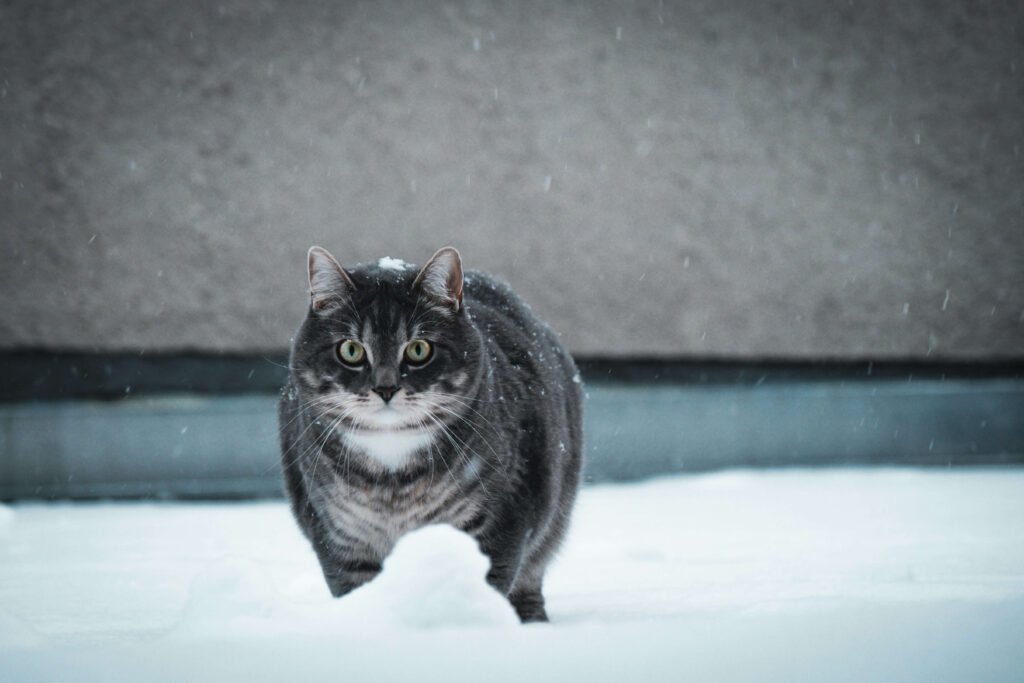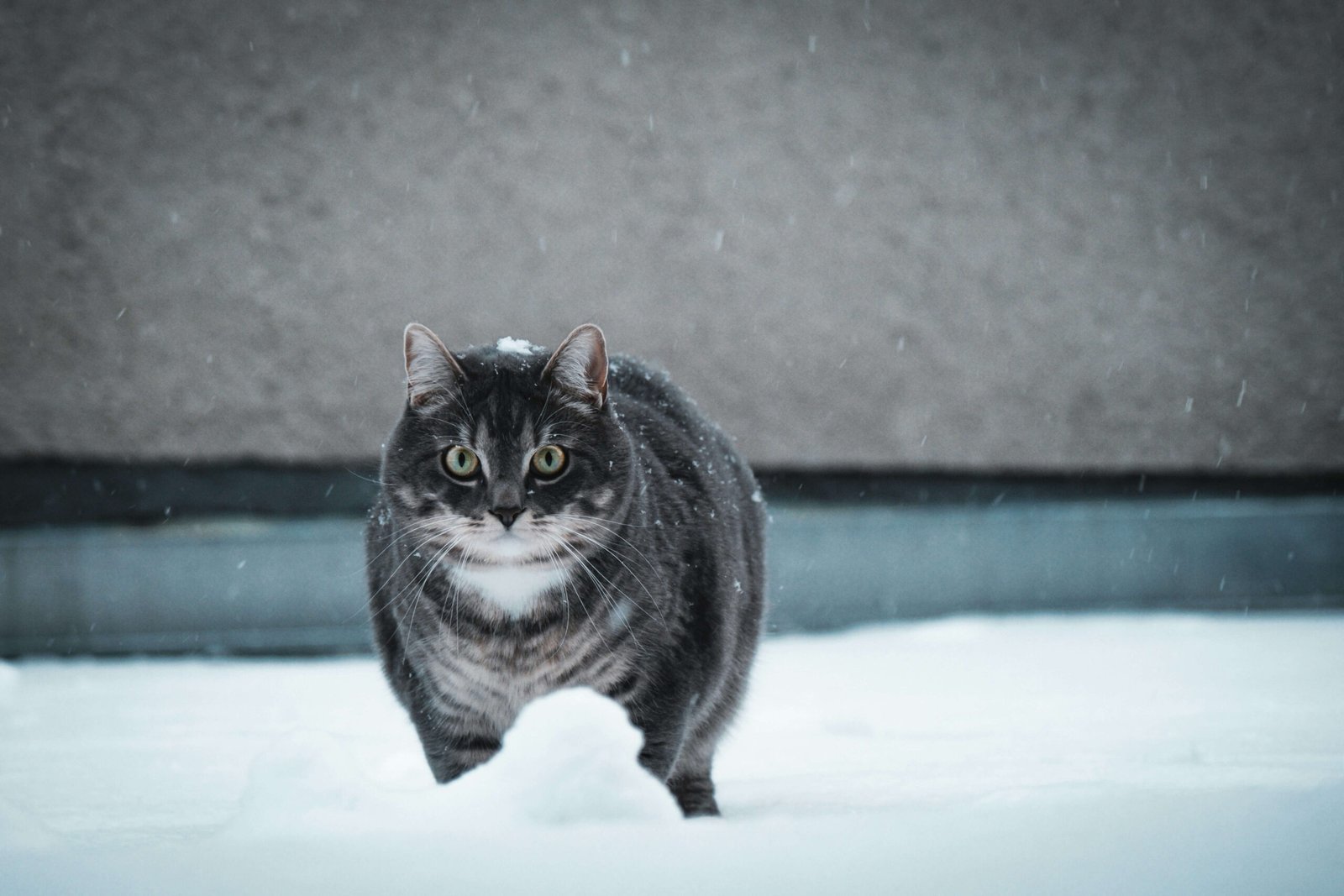How Deep Should Cat Litter Be? A Guide for Happy Cats and Happy Owners
When it comes to creating a comfortable and hygienic environment for your feline friend, the depth of cat litter plays a crucial role. Many cat owners wonder how much litter is just right – too little might not absorb odors effectively, while too much could lead to wastage or even discourage your cat from using the box. Understanding the ideal depth can make a world of difference in maintaining cleanliness, promoting healthy habits, and ensuring your furry companion feels at ease. Let’s dive into this topic and explore everything you need to know about finding the perfect balance.
Factors That Influence the Ideal Litter Depth
Choosing the right depth isn’t a one-size-fits-all solution. Several factors come into play when determining what works best for your cat. Here are some key considerations:
Cat’s Age : Kittens may prefer shallower litter because they’re still learning to dig and cover their waste.
Health Conditions : Senior cats or those with mobility issues might struggle with deeper litter due to joint pain or difficulty maneuvering.
Litter Box Type : Covered litter boxes often require less litter since they trap odors more effectively than open trays.
Cat’s Preferences : Every cat has unique habits; some like to dig deep, while others prefer a thin layer. Observing your pet’s behavior can guide your decision.
Type of Litter Used : Clumping litter typically performs better with moderate depth, while non-clumping varieties might need slightly more material for absorption.
By considering these aspects, you’ll be better equipped to tailor the litter depth to your cat’s specific needs. Remember, trial and error is part of the process!
General Guidelines for Litter Depth
While individual preferences vary, there are general recommendations that most experts agree on. Below are some guidelines to help you get started:
Standard Depth Range : Most cats thrive with a litter depth between 2 to 4 inches (5 to 10 cm). This range strikes a good balance between comfort and functionality.
Avoid Overfilling : Going beyond 4 inches can overwhelm your cat and increase the risk of litter being kicked out of the box.
Minimal Depth for Training : If you’re introducing a kitten to the litter box, start with around 1 to 2 inches (2.5 to 5 cm) until they become accustomed to digging.
Adjust as Needed : Monitor your cat’s behavior closely and tweak the depth based on their reactions. Signs of discomfort may indicate adjustments are necessary.
Consistency Matters : Keep the depth consistent across all litter boxes if you have multiple ones. This helps avoid confusion for your cat.
These tips provide a solid foundation for setting up your cat’s litter box. With time, you’ll discover what works best for both you and your furry friend.
Check this guide 👉How Often Should I Change Cat Litter? Best 7 Expert Tips!
Check this guide 👉DIY Cat Litter Box: Best 7 Expert Tips!
Check this guide 👉Is Cat Litter Toxic? Best 7 Expert Tips!

Pros of Proper Litter Depth | Cons of Incorrect Litter Depth |
|---|---|
Encourages natural digging behavior | Too shallow can result in poor odor control |
Reduces tracking outside the box | Excessive depth can cause litter wastage |
Promotes hygiene and cleanliness | Cats may avoid using overly deep litter |
Minimizes stress during bathroom time | Shallow litter may expose waste visibly |
Supports easier scooping and maintenance | Uneven depths confuse multi-cat households |
Common Mistakes to Avoid When Setting Litter Depth
Even experienced cat owners sometimes overlook important details when managing their pet’s litter box. To prevent common pitfalls, keep the following points in mind:
Ignoring Behavioral Cues : Pay attention to whether your cat seems hesitant or frustrated after using the box. These signs could indicate improper depth.
Using One Size for All Cats : In multi-cat homes, each feline may have different preferences. Customize accordingly instead of applying a blanket approach.
Overlooking Litter Quality : Pairing incorrect depth with low-quality litter compounds problems like odor retention and clumping inefficiency.
Neglecting Regular Cleaning : No matter the depth, failing to clean the box daily undermines its effectiveness and discourages use by your cat.
Assuming More Is Better : Adding excessive litter doesn’t necessarily improve performance and may lead to unnecessary expenses.
Steering clear of these mistakes ensures a smoother experience for both you and your cat. Small changes can yield big improvements!
Benefits of Finding the Right Litter Depth
Getting the depth just right offers numerous advantages that enhance your cat’s well-being and simplify your routine. Consider these benefits:
Improved Hygiene : The correct depth allows for better absorption and odor control, keeping the area fresh and clean.
Enhanced Comfort : Cats feel secure when they can dig and cover their waste comfortably without straining.
Reduced Waste : Using an appropriate amount minimizes litter spillage and extends the lifespan of the product.
Stress-Free Bathroom Trips : A properly set-up litter box reduces anxiety, encouraging regular use and preventing accidents elsewhere.
Stronger Bonding Opportunities : Happy cats mean happy owners – providing a pleasant litter experience fosters trust and affection.
Achieving the ideal litter depth not only benefits your cat but also enriches your shared life together.
Additional Tips for Managing Litter Depth
Managing litter depth goes beyond just pouring it into the box. Here are some extra tips to ensure you’re covering all bases:
Test Different Depths Gradually : Start with a moderate depth and adjust incrementally to see what your cat prefers.
Observe Digging Patterns : Notice how deep your cat digs – this can give clues about their ideal litter level.
Use Visual Markers : Place small markers inside the box to maintain consistent depth across cleanings.
By experimenting and staying observant, you’ll fine-tune the setup to suit your cat’s unique habits. Every small adjustment brings you closer to the perfect solution.
Signs Your Litter Depth Might Be Wrong
Sometimes cats communicate their dissatisfaction in subtle ways. Look out for these signs that your litter depth may need tweaking:
Refusal to Use the Box : If your cat avoids the litter box altogether, the depth could be discouraging them.
Excessive Litter Tracking : Finding large amounts of litter scattered around might indicate it’s too deep.
Visible Frustration : Pawing at the sides of the box or vocalizing during use can signal discomfort.
Uncovered Waste : Cats naturally bury their waste; if they stop doing so, reconsider the litter setup.
Preference for Other Surfaces : Digging on carpets or elsewhere suggests dissatisfaction with the current arrangement.
Recognizing these signals early allows you to address issues promptly, ensuring your cat remains content and stress-free.
Tools to Help Maintain Optimal Litter Depth
Investing in a few tools can make maintaining the right litter depth easier and more efficient. Consider these helpful items:
Litter Scoop with Depth Guide : Some scoops feature markings to help you gauge the correct amount of litter.
Adjustable Litter Mats : These catch stray litter particles and help monitor how much is being tracked out.
Divided Litter Boxes : Boxes with segmented areas allow for customized depths within the same unit.
Measuring Cups or Containers : Use dedicated tools to measure litter consistently each time you refill the box.
Non-Slip Litter Box Liners : These prevent shifting and ensure even distribution of litter throughout the box.
With the right tools at hand, managing litter depth becomes a seamless part of your routine. Small investments can lead to significant improvements in cleanliness and convenience.
FAQ
Can I use the same litter depth for multiple cats?
While possible, it’s advisable to observe each cat’s preferences individually, as they may differ.
What happens if I put too much litter in the box?
Excessive litter can lead to wastage, increased costs, and potential avoidance by your cat.
How often should I change the litter completely?
Aim to replace the entire litter every 1-2 weeks, depending on usage and cleaning frequency.
Does litter type affect how deep it should be?
Yes, clumping litters generally perform well at moderate depths, whereas non-clumping options may require slightly more.
My cat keeps digging but never seems satisfied. What should I do?
Experiment with increasing the depth slightly or switching to a softer-textured litter that mimics natural digging conditions.
Final Thoughts: Striking the Perfect Balance
Finding the ideal cat litter depth might seem daunting at first, but with patience and observation, you’ll soon identify what suits your feline companion best. By balancing practicality with your cat’s unique preferences, you create a harmonious environment that supports their health and happiness. Remember, a happy cat translates to a peaceful home – so take the time to experiment and refine your approach. With these insights, you’re now ready to tackle this essential aspect of pet care confidently.
Can a Cat Die from a Cold? Best 7 Expert Tips! Learn how to identify, treat, and prevent feline colds while understanding when to seek veterinary care for your cat’s health.
Cat Screaming for Food: Best 7 Expert Tips! Discover effective strategies to manage your cat's food-related vocalizations and create a peaceful feeding routine.
Aspiration Pneumonia in Cats: Best 7 Expert Tips! Discover causes, symptoms, and treatment advice to protect your cat’s respiratory health and ensure a speedy recovery.
Hip Dysplasia in Cats: Best 7 Expert Tips! Discover expert advice on managing hip dysplasia in cats, from symptoms and prevention to treatment options for a happier, healthier feline life.





